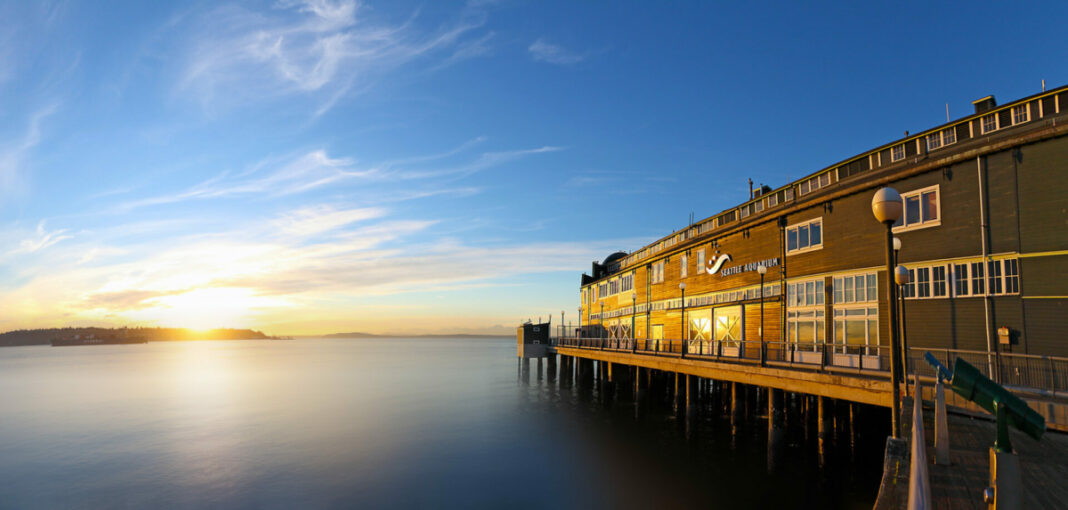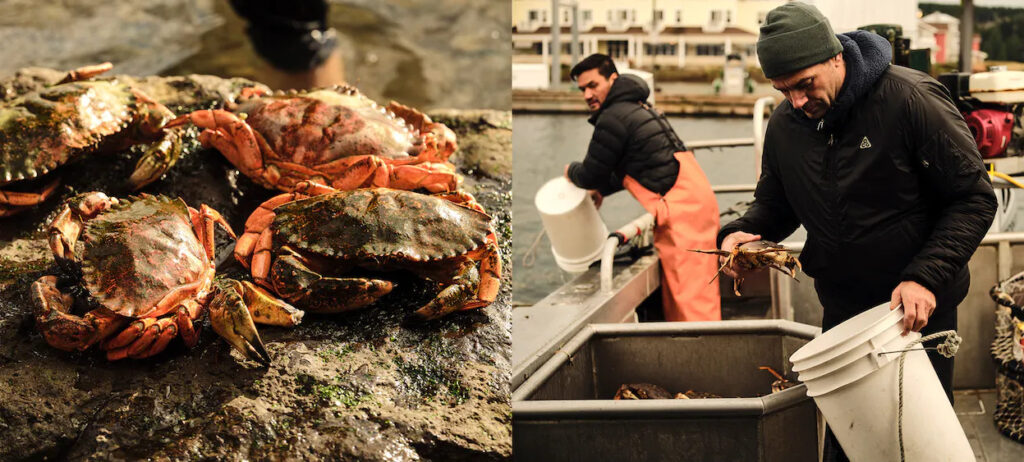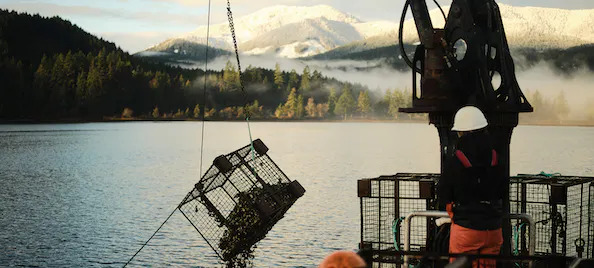West Palm Beach, FL. Huckberry is a brand and online retailer that was founded in 2010. They sell clothes and gear and all kinds of cool stuff for around your house and your firepit. It is the kind of website that can call its goods “curated,” and they cater primarily to men. But Huckberry does more than sell hats and shoes and men’s soap. The founders imagined “a brand that was equal parts store, magazine, and inspiration.” They encourage you to be adventurous and creative and well-dressed. They have a journal which can introduce you to books and artists and music you should know. They have a podcast and online videos. Some of the videos are simple gear videos, but others are more ambitious. This year they launched a series of short films called Dirt. Perhaps surprisingly, given their commercial origins, these films have something to say about loving land and valuing place.
Dirt is eminently watchable and envy-inducing. In each 20-30 minute episode, the host Josh Rosen meets with a local chef who sends him out on an adventure to find some of the best local ingredients. Rosen travels the area, meets up with cool people, visits some farms and does some foraging, enjoys the local outdoors, jumps off something high into some water, and then the show ends with a feast cooked from all of the gathered ingredients. The first episode was set in Seattle, the second in New Orleans, the third in “The North” (Minnesota).
The series is firmly grounded in a place and anchored by people with a connection to that place. In the first episode, we learn that Rosen grew up in the Seattle area and spent his childhood outdoors and foraging. He moved away to New York City and spent some time working in restaurants and bars, but he never forgot the lessons he learned at a young age. As he says in the episode, “My dad taught me that the freshest ingredients didn’t come from the grocery store. And, if you dig a little, you can find food wherever you are.”
In every episode, Rosen is introduced to interesting people, beautiful landscapes, and inspiring food. In the Seattle episode, he joins truffle hunters, catches crabs and geoduck, and gets oysters from local oyster farmers. In the New Orleans episode, he spends time with people who gather thistles and hunt wild hogs, catches shrimp and crab, visits someone who raises honey and water buffalo, learns to separate crawfish fat, and gets homemade boudin and blackberry pie. In the North episode, Rosen comes across more honey, apples, Hmong food, hemp, eelpout, herring, mushrooms, sausage, smoked fish, and grouse. He gets to participate in a wild rice harvest with Native Americans and learns about birch bark art. All of this happens to a good soundtrack, minimal but solid narration by Rosen, and overhead drone shots of amazingly beautiful landscapes, highways, bridges, and rivers.
Every episode explores the relationships among people, place, and food. In Seattle, Rosen comments, “I’ve found there’s a strong correlation between adventure and food in my life.” In that episode he enjoys a crab omelet on the beach, snowboarding followed by a hot tub before truffle-hunting, and some beautiful boat rides. In New Orleans, chef Mason Hereford tells us that “New Orleans is all about the people… Everyone has a story to tell.” He describes the city as having the best ingredients in the world, including in art, music, and people. The city and its food and its people are inseparable. Rosen adds that “chefs have unique access to a place” because of their sourcing of ingredients and because restaurants become so important in people’s lives. In the Minnesota episode, host chef Yia Vang says “you want to know people, know their food.” Rosen agrees, summing up the episode at the end by saying, “My time in Minnesota was about the connection people have to where they live and the food they eat.”
Huckberry’s Dirt shows the significance of the relationship between people and the land and the food they eat. In Seattle, Rosen catches crabs with a man who built his boat by hand and who is a member of a local Native American tribe. He gets oysters from a third-generation oyster farmer who talks about merroir. In Louisiana, Rosen gets oysters from a fourth-generation oyster farmer. He spends time fishing from a pirogue in a swamp, with a local musician who is also an outdoorsman. In Minnesota, Rosen visits the Red Wing shoe factory, which sources its leather locally, and goes for some Great Lakes surfing. He goes hunting with a local man and visits the host chef’s family garden, which happens to be big enough to feed a family and provide for a restaurant or two. In every episode, we get the sense that the best food we eat has an identifiable history and the people who get the most out of food are those who source the ingredients themselves or at least understand the relationship between the land they live on and the food they eat.
All of this makes America look like a place full of adventure, regional distinctives, and really good food. Who doesn’t want to drive down some beautiful highways, surf some local spots, swim in a local watering hole, and enjoy an amazing feast? America the beautiful, indeed. Taste and see that the land is good. It is flowing with milk and honey.
Of course, Huckberry is a commercial enterprise. In every episode, Rosen wears clothing you can buy from the shop. In some episodes, he’s prominently featuring Tincup whiskey. Everything is about family, history, and heritage… but it is also a little bit about selling things, if very indirectly. Part of what Huckberry is selling is a lifestyle. People who enjoy these things and understand this approach to land and food and quality goods should buy the brand’s well-curated items.
The Huckberry lifestyle is one filled with adventure, good food, high quality gear, and meaningful places. You need real gear because you’re going real places. You need good knives because you’re going to cook good food. Your house should look cool because you will be entertaining cool people. You should listen to good music. You should read good books. You should be an interesting person who does interesting things. They do collabs and they do photo shoots that tell a story. Like Tracksmith, buying the goods suggests an appreciation for a certain kind of culture and community. They often send you a sticker with your order. You have to join the website to buy the gear.
The people behind Dirt may love the country, but they would also love us to buy some linens. Is that so bad? On the one hand, this can make Dirt seem a little less inspired. It’s easy to dismiss the Huckberry image and its videos as posited on consumerism and some posturing. But without the brand, we probably wouldn’t have the videos. It’s easy to say you care about localism and then spend your time only tending your own garden. Huckberry’s marketing and videos convince people it’s worth it to pay more for Red Wing boots and support heritage American goods. They don’t just say we have a beautiful country, they show people that we do, even if the video is also highlighting the 72-hour merino t-shirt.
Can this type of consumerism advance real culture, remembering the Wendell Berry reminder that culture is always tied to agriculture? In interviews, it’s been made clear that the mission of Huckberry is “to inspire and equip adventures near and far.” Along the way, that has meant a bar crawl guide for New York City that highlighted places where famous authors would go for a drink. It has included the promotion of up-and-coming blues musicians. The brand encourages you to go places and use your Field Notes notebook to write down what you see and learn. There is always an element of consumerism, but you can certainly get gear and clothing from some other retailer with a lot less inspiration.
Huckberry’s success speaks to a desire for adventure and relationship with the land within the American public. People want to go backpacking and hiking and ride their motorcycles across the vast expanses of these United States, or at least they think they do. They want to hunt and fish and read American literature, or look like they do. They want to gather around the fire with friends in meaningful locations. If brands and retailers can tap into this, can’t others? Perhaps friends of Wendell can do better communicating the adventure and passion behind their perspective and can do more to connect with the tattooed chefs who help build up local food economies.
As a country that has not only experienced but widely advocated capitalism, our relationship to consumerism can be both complicated and intense. Our connection to brands can be very personal. In the early twentieth century, many poor, rural Americans made dresses out of flour sacks. They had no other readily available or affordable fabric. Realizing that, the flour companies started making them with patterns. It was good marketing for the flour companies, but it was also a kindness to their customers. They were never not selling flour, but the floral pattern was a gift. There may indeed be some love underneath the layers of consumerism with some of today’s brands, like Huckberry. Or they may at least offer us some things worth loving in what they do to advertise their vision.
Image Credit: Puget Sound via Flickr














This is a good and generous article. I say that as someone whose journey into localism likely had something, however small, to do with an intro to Huckberry during undergrad. Now, I look back at it with some ambivalence. But now I’m reminded of some needed generosity as well, thanks to this.
Another similar outfit is Modern Huntsman, to which I subscribe. It’s a twice-yearly journal exhibiting responsible hunting lifestyles lived by cool, beautiful people in cool, beautiful places. Is it a schtick? Maybe. But a short essay on John Graves’ ‘Goodbye to a River’ in its recent volume inspired me to buy the book. And I’ll begin fly fishing on the Brazos soon to boot.
“People want to go backpacking and hiking and ride their motorcycles across the vast expanses of these United States, or at least they think they do.”
Same trend as huge tires on a jeep that never goes off road?
It’s a very old ploy, but Elizabeth has done a great job of letting Dirt speak for itself before questioning intent, then offering us a great concluding paragraph.
https://www.amazon.com/Selling-dreams-How-advertising-misleads/dp/9679950204
published in Jan 1986 and still worth a read.
A prime “selling a dream” example in the book is familiar to Americans, namely the Marlboro Man: rugged and independent man pictured outdoors to appeal to men slaving away in a crowded factory in a polluted city.
Consumerism is such low-hanging fruit for the average cultural critic. On the other hand, cultural critics who want to be above-average can always make hay by subverting the tropes (“consumerism is good, actually!”). I think the best way to proceed is with the straightforward generosity that Elizabeth shows here, which is hard to pull off (for me, at least).
One of my favorite short films is an advertisement for HSBC Bank (“Lumberjack”; you can find it on youtube). It’s very beautiful, not least because the soundtrack is a song by Joanna Newsom, one of my favorites. It’s also devious and morally ugly – not till the end do you realize it’s an add for a global banking empire, and that the message is “Mammon brings us all together – don’t let your petty moral disagreements get in the way of our profits.” There are three ways to react to it. One, you could deny the beauty in order to reject the ugliness: you pretend it’s not beautiful in order to show everyone you’re not fooled. Two, you could deny the ugliness in order to enjoy the beauty; you let yourself be fooled so you can enjoy the show. Of course the better way is the third way: you try to recognize all the moral facts, to hold them all steady and distinct in your mind, to keep one from crowding out the others.
The good cultural critic is neither a snob nor a sucker. This essay is good criticism.
“If you would know the flavor of huckleberries, ask the cowboy or the partridge.” – Henry David Thoreau.
Comments are closed.